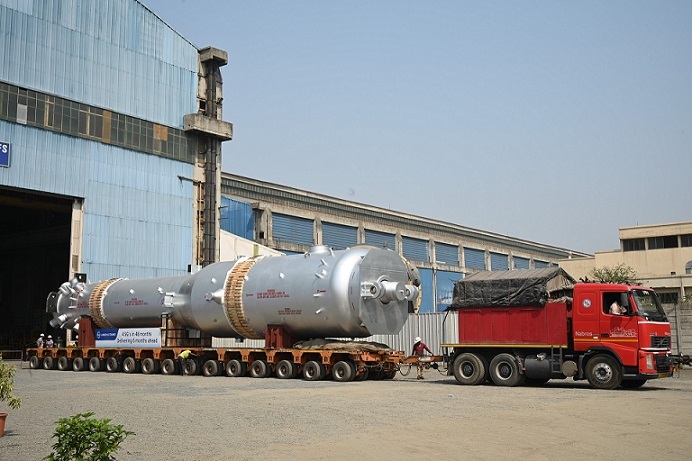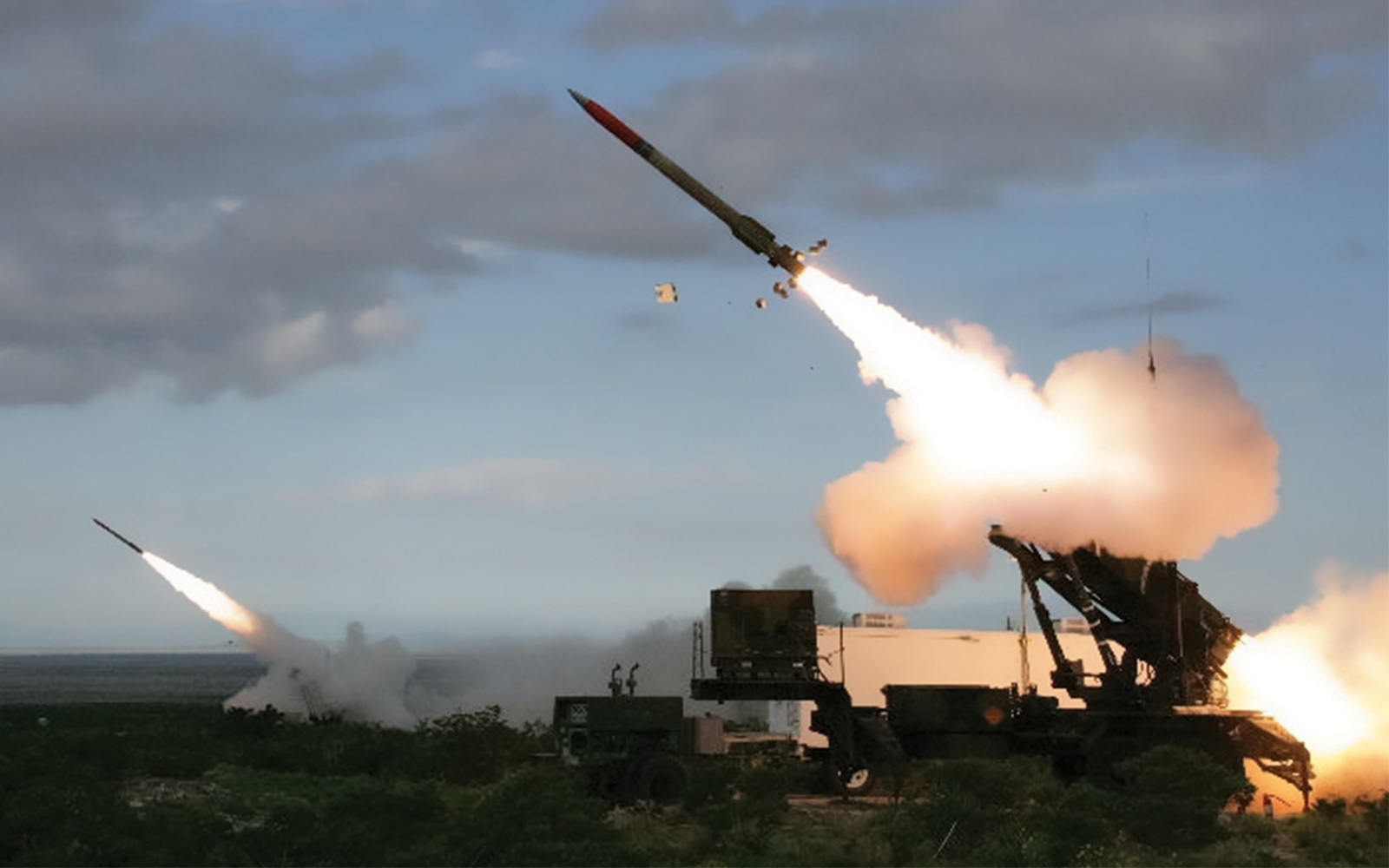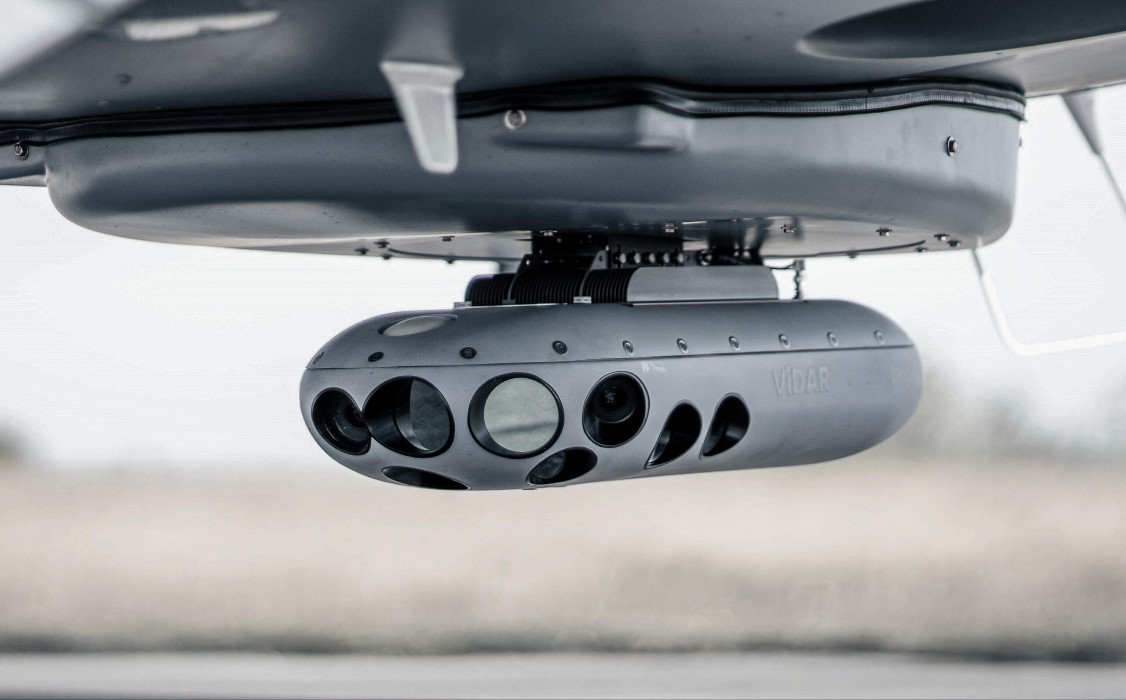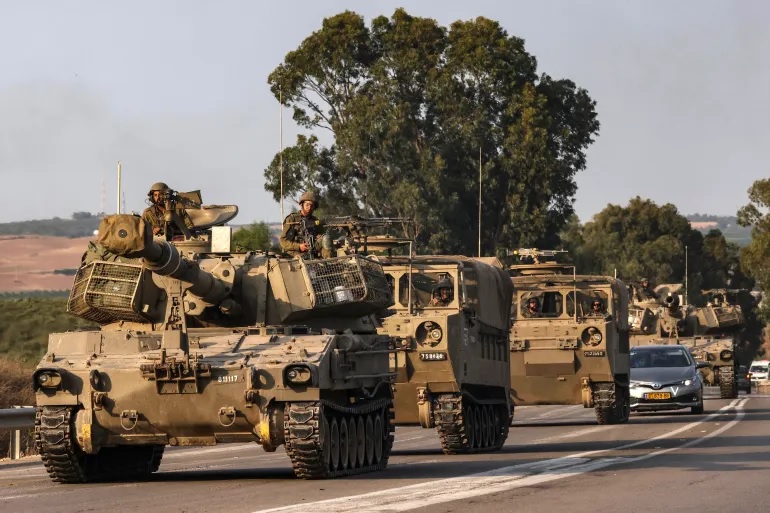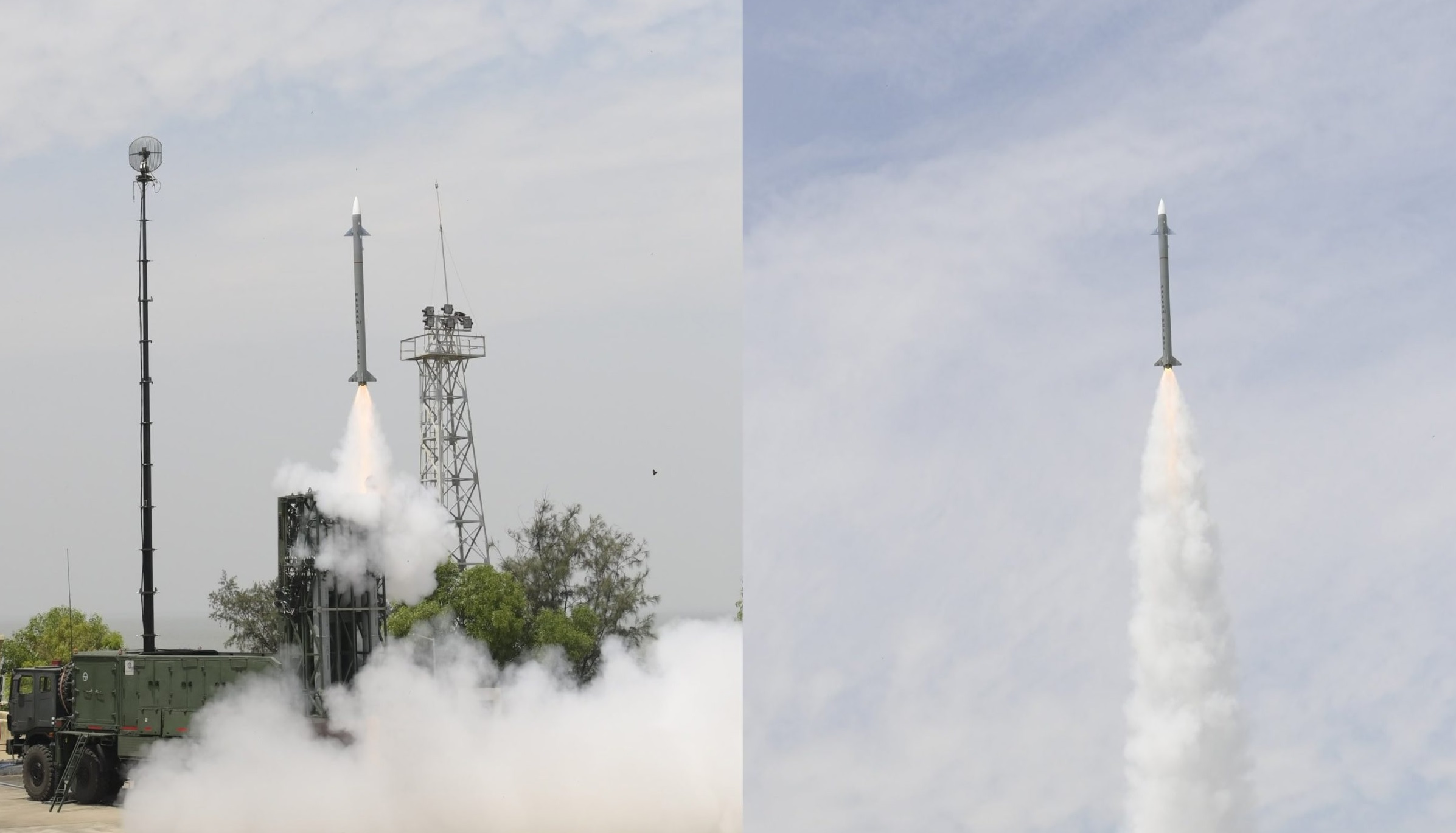World
In a fresh blow to diplomatic hopes, Iran has firmly turned down former U.S. President Donald Trump’s call for direct nuclear talks, arguing that dialogue under threat is both pointless and contradictory. The refusal comes amid rising tensions between Tehran and Washington, with Iran accusing the United States of using coercive language and failing to show genuine commitment to peaceful diplomacy. Last month, Trump sent a letter to Iran’s Supreme Leader Ayatollah Ali Khamenei through the United Arab Emirates, suggesting direct negotiations to resolve longstanding concerns over Iran’s nuclear program. The letter included a stern warning that if diplomacy failed, military options were still on the table. Despite this, Trump recently doubled down on his stance, stating that face-to-face talks would be “faster” and more effective than negotiations through intermediaries. But Tehran isn’t buying it. Iran’s top diplomat Abbas Araghchi dismissed the proposal outright, calling direct talks meaningless with a country that issues threats and contradicts itself. “We are dealing with a government that constantly violates international norms by threatening the use of force,” Araghchi said. He added that Iran remains open to indirect negotiations but emphasized the need for mutual respect and seriousness in diplomacy. President Masoud Pezeshkian echoed this sentiment, questioning the logic of negotiating with a nation that simultaneously speaks of peace while brandishing threats. “If you truly want dialogue, then why the constant pressure and threats?” he asked, reiterating Iran’s willingness to engage on equal footing but only in an environment free of coercion. Iran's leaders made it clear they are not rejecting diplomacy altogether—they're rejecting the form and tone in which it's being offered. Iran’s Strategic Calculations Iran’s response, delivered through Oman, stressed its preference for peace and regional stability. General Mohammad Bagheri, Chief of Staff of Iran’s armed forces, underlined that while Iran does not seek war, it stands fully prepared to defend itself if provoked. This diplomatic standoff comes against the backdrop of the long-dormant 2015 nuclear agreement, formally known as the Joint Comprehensive Plan of Action (JCPOA). The deal, signed between Iran and six world powers, limited Iran’s nuclear activities in exchange for the lifting of economic sanctions. However, in 2018, Trump unilaterally withdrew from the pact and reinstated harsh sanctions, pushing Iran to gradually abandon its commitments and ramp up its nuclear program. While Western powers continue to accuse Tehran of trying to build nuclear weapons, Iran insists its program is strictly for civilian purposes. Still, the pressure is mounting. In a stark warning, Ali Larijani, a senior adviser to Ayatollah Khamenei, cautioned that while Iran does not desire nuclear weapons, it might be forced to pursue them if the country faces an existential threat. Why Iran Is Saying “No” to Direct Talks At the heart of Iran’s rejection is a deep-seated mistrust rooted in decades of hostility, regime change efforts, sanctions, and broken agreements. Iranian officials see direct talks, especially with Trump—who dismantled the JCPOA—as unreliable and laden with bad faith. For them, returning to the table without guarantees or mutual respect is a trap, not a solution. In their view, negotiating under threat is not diplomacy—it’s blackmail. That’s why, despite being open to indirect dialogue through trusted intermediaries like Oman, Iran is standing firm on refusing direct engagement for now. Final Thoughts Iran’s rebuff to Trump’s direct diplomacy reflects not just a rejection of one man’s offer, but a broader skepticism about American intentions. As both sides dig in, the window for a peaceful, negotiated solution remains open—but only barely. Without a shift in tone, trust, and tactics, the road to resolving the nuclear issue may remain blocked by a wall of suspicion and strategic calculation.
Read More → Posted on 2025-04-06 14:53:14World
Latvia is taking a major step to modernize its military by purchasing 42 ASCOD infantry fighting vehicles (IFVs) from Spain’s defense company, GDELS-Santa Bárbara Sistemas. The deal, valued at €373 million (around $408 million), is part of a broader plan to strengthen the Latvian National Armed Forces, especially its mechanized infantry brigade. This purchase is more than just a replacement for outdated vehicles—it marks a significant upgrade in Latvia’s combat readiness. The new ASCOD IFVs will take the place of the older CVR(T) reconnaissance vehicles previously bought from the United Kingdom. Compared to those older models, the ASCOD offers far better protection, mobility, and firepower. Each ASCOD comes with NATO-standard Level 4 armor, a powerful 30mm automatic cannon, anti-tank weapon systems, and advanced communication and sensor systems. It’s operated by a crew of three and can carry six fully armed soldiers into battle. The new vehicles will serve one battalion of Latvia’s mechanized infantry brigade, but the Ministry of Defense has made it clear that this is just the beginning. If more funding becomes available, more battalions could be equipped with similar vehicles. The contract also leaves room for the future possibility of domestic production or assembly of ASCOD vehicles in Latvia—something that would boost local manufacturing and defense capabilities. An important part of the deal is that 30% of its total value is reserved for the Latvian industry. This means local companies could benefit through technology transfer, producing parts, or offering maintenance and support services. It’s not just about buying vehicles—it’s also about building Latvia’s long-term defense potential from within. The choice of the ASCOD platform also reflects a move toward greater compatibility across military units. Using the same type of vehicle in different battalions makes logistics, maintenance, and training easier and more cost-effective over time. In terms of battlefield value, the ASCOD is a strong asset. Its high-level armor ensures better protection for troops, while its weapons and advanced systems make it suitable for both offensive and defensive operations. With today’s complex threats—from hybrid warfare to direct armed conflict—Latvia’s army needs tools that can adapt and perform in multiple scenarios. The ASCOD does exactly that. This move also aligns with broader NATO goals, as Latvia continues to invest in meeting alliance standards and increasing its contribution to regional security, especially given current tensions in Eastern Europe. In summary, this deal is more than a vehicle purchase—it’s a smart, strategic investment in Latvia’s future defense capabilities. It boosts the military’s firepower, supports local industry, and prepares the nation to better face modern security challenges.
Read More → Posted on 2025-04-06 14:51:05India
In a significant stride toward India’s goal of defence self-reliance, Godrej Aerospace has successfully delivered two modules of the Kaveri Derivative Engine, also known as the Dry Kaveri, to the Gas Turbine Research Establishment (GTRE). This delivery marks a pivotal moment in India’s indigenous jet engine development journey and underlines the growing role of private industry in the nation’s aerospace sector. The Dry Kaveri engine is a modified, non-afterburning version of the original Kaveri engine that was originally developed for the Light Combat Aircraft (LCA) Tejas. While the original Kaveri program faced multiple delays and challenges, the Dry Kaveri variant has found renewed purpose in powering future unmanned aerial vehicles and potential light combat aircraft. With a thrust class of around 48 kN, the Dry Kaveri is tailored for platforms that do not require afterburning capability, making it ideal for UAVs and stealth applications. Godrej Aerospace’s achievement stems from a September 2022 contract awarded by DRDO, which tasked the company with manufacturing eight engine modules. The first two modules have now been completed and handed over to GTRE within the stipulated two-year timeframe. This success reflects Godrej's growing expertise in aero-engine manufacturing, a field traditionally dominated by government entities. As per the contract, six more modules are under development and expected to be delivered by late 2025. These modules will complete the set required to assemble a full Dry Kaveri engine for further performance testing and evaluation. Once the full engine is ready, it will undergo a rigorous series of ground and flight tests, which are crucial to validate its design, durability, and performance under real-world conditions. The Dry Kaveri engine has already undergone high-altitude testing in Russia, where its initial results were marked as satisfactory. However, continued testing and iterations will be necessary before it can enter operational deployment. Importantly, GTRE is also working on an afterburner module for the Dry Kaveri, which is expected to enhance its thrust to 73-75 kN. If successful, this could open the door for its use in manned platforms such as HAL’s HLFT-42, a new-generation trainer and light combat aircraft being designed for both domestic and export markets. The broader impact of this project goes beyond just the engine itself. According to executives from Godrej Aerospace, the project has enabled the company to develop crucial metallurgical and manufacturing expertise, particularly in handling challenging materials like titanium. Titanium is essential in aerospace applications due to its strength, lightweight, and corrosion resistance but requires precision engineering due to its difficult nature. Developing the ability to work with such materials is a strategic gain for India’s entire aerospace manufacturing ecosystem. This initiative also aligns with India’s long-term vision to develop its own 5th generation fighter jet engines, particularly for the Advanced Medium Combat Aircraft (AMCA) project. While that goal is still on the horizon, the Dry Kaveri project serves as a vital stepping stone, helping Indian engineers and private firms gain the knowledge and experience needed to build more complex engines in the future. In conclusion, Godrej Aerospace’s delivery of the first two Dry Kaveri engine modules is not just a contract milestone—it’s a symbol of India’s evolving aerospace capabilities. As more modules are completed and tested, the project will bring India closer to a future where indigenous engines power its next generation of combat aircraft and unmanned systems. This also represents a shift in India’s defence ecosystem, where public-private partnerships are becoming the cornerstone of innovation and self-reliance.
Read More → Posted on 2025-04-06 14:43:10India
India is preparing for a major leap in its airborne surveillance capabilities as the Indian Air Force (IAF) is set to induct six new Netra Mk1A Airborne Early Warning and Control (AEW&C) aircraft. These systems will be based on pre-owned Embraer EMB-145 regional jets and will significantly enhance the IAF’s real-time battlefield awareness, airspace monitoring, and threat detection capabilities. This expansion, once formally cleared by the Defence Acquisition Council (DAC), will nearly triple the IAF’s current AEW&C capacity, a critical improvement that military planners have long advocated—especially after lessons drawn from aerial skirmishes in 2019 with neighboring Pakistan. Building on a Proven Platform The current Netra AEW&C systems, built by DRDO’s Centre for Airborne Systems (CABS), use the same EMB-145 platform and have been in service since the 2010s. They offer 240-degree radar coverage over a range of roughly 450 kilometers and are integrated with Indian-made AESA radar, Identification Friend or Foe (IFF) systems, secure data links, and electronic countermeasure technologies. The upcoming Mk1A version will build upon this proven design but bring notable improvements in radar range, signal intelligence gathering, threat tracking, and electronic warfare support. These enhancements are designed to address India’s growing airspace security challenges across its western and northern frontiers. Strategic Partnership: Adani and Embraer Since the EMB-145 is no longer in production, the plan involves acquiring pre-owned jets from the global market. Brazil’s Embraer, the original manufacturer, will partner with India’s Adani Defence and Aerospace to source suitable airframes. This is a pragmatic approach, leveraging Embraer’s global reach and Adani’s expanding defence industry presence in India. Adani won’t just help locate the jets—it will also play a central role in converting the commercial EMB-145s into sophisticated military AEW&C platforms. This includes structural modification, installation of radar domes, integrating indigenous mission systems, and carrying out extensive avionics upgrades. Adani’s growing Maintenance, Repair and Overhaul (MRO) capabilities will also help keep the aircraft service-ready throughout their operational life. This partnership fits neatly into India’s push for defence self-reliance, as it ensures that high-end systems like Netra are not only designed but also assembled and upgraded within the country. Why the EMB-145 Still Matters Despite being out of production, the Embraer EMB-145 remains a reliable and efficient platform. With a range of over 2,800 km and a cruise speed of Mach 0.78, it is well-suited for extended surveillance missions. Its previous successful integration with Indian systems means less development risk and faster deployment timelines for the Mk1A variant. Careful selection of used airframes will be key. These jets must be structurally sound and capable of handling the additional electronic and structural weight imposed by the AEW&C systems. Once selected, they will undergo significant modification, likely with technical assistance from Embraer engineers, to meet the military standards of the IAF. Strategic Impact and Forward Path The addition of these six Netra Mk1A aircraft is only one part of a larger strategy to strengthen India’s airborne surveillance network. In parallel, India is also developing six larger AEW&C systems based on the Airbus A321 platform. These will offer longer endurance and larger radar coverage but will take more time to enter service due to their complexity and scale. In contrast, the EMB-145 based Netra Mk1A aircraft are expected to be operational sooner, thanks to the maturity of the technology and existing expertise. The IAF’s current use of the EMB-145 for VIP transport also adds logistical familiarity to the equation, further smoothing integration. With this project, India is not just adding numbers to its fleet—it’s making a qualitative upgrade to its ability to maintain situational awareness in contested skies, coordinate air operations, and respond to threats in real time. In an era of rising regional tensions and the increasing use of drones, cruise missiles, and low-flying aircraft, having more “eyes in the sky” is no longer optional—it’s essential. The Netra Mk1A initiative, combining indigenous tech, private sector capability, and international collaboration, marks a promising step in India’s defence modernisation journey.
Read More → Posted on 2025-04-06 14:38:00India
India has reached a major milestone in its pursuit of clean and sustainable energy by completing the concept design of the Bharat Small Modular Reactor (BSMR-200) — a 200 MWe pressurised water reactor. This landmark project, developed jointly by the Bhabha Atomic Research Centre (BARC) and the Nuclear Power Corporation of India Limited (NPCIL), is tailored to meet the evolving needs of India’s power sector, especially in areas where traditional large nuclear reactors may not be feasible. What Makes the BSMR-200 Special? Unlike conventional nuclear plants, the BSMR-200 is a compact, scalable, and safer alternative. It’s equipped with advanced passive safety systems, meaning it can shut down and cool itself during emergencies without the need for operator intervention or external power. This drastically reduces the risk of accidents, even under off-normal conditions. The reactor will run on slightly enriched uranium, maintaining India’s tradition of using indigenous fuel sources, while also enhancing energy efficiency. Once financial approval is secured, the first demonstration unit is expected to be constructed within six years, and commissioned by the seventh year, with a projected cost of around ₹5,700 crore. Strategic Vision and Industrial Applications The government envisions these small modular reactors as a key component of its plan to achieve 100 GW of nuclear power capacity by 2047, in line with India’s clean energy transition goals. The BSMRs are designed for multiple real-world applications, including: Captive power supply to energy-intensive industries like steel, cement, and aluminium. Electricity generation for remote and off-grid regions, improving access and reliability. Repurposing aging thermal power plants, allowing their existing infrastructure to support modern nuclear energy systems. This approach not only aids in decarbonising India’s energy mix, but also revitalises old industrial assets, making the transition to clean energy more cost-effective. Involving the Private Sector: A Historic Shift One of the most revolutionary aspects of the BSMR initiative is the opening up of India’s nuclear sector to private companies. For decades, nuclear energy generation in India was the exclusive domain of the government, strictly regulated by the Atomic Energy Act of 1962. Now, through structured collaboration, the Department of Atomic Energy (DAE) plans to work with private vendors for key components like reactor pressure vessels and coolant pumps. Construction and commissioning will be carried out by pre-qualified Engineering, Procurement and Construction (EPC) firms, selected through competitive bidding. This strategy not only attracts fresh investment, but also accelerates deployment by tapping into the technical expertise and efficiency of India’s private sector. Technological Roots in Proven Systems The Bharat Small Modular Reactors draw their core design principles from India’s successful 220 MWe Pressurised Heavy Water Reactor (PHWR) technology. Sixteen of these reactors are already operational in the country, making them a reliable base for further innovation. The BSMR, however, adapts this experience into a pressurised water reactor (PWR) design — more suited for modular, factory-based manufacturing and faster construction cycles. A Game-Changer for the Future With the global focus shifting towards decentralised, clean, and secure energy systems, India’s BSMR programme places it at the forefront of next-generation nuclear technology. It not only reflects the country's commitment to sustainability, but also showcases its capability to lead in innovative nuclear solutions that are safer, smaller, and smarter. As the world grapples with the twin challenges of climate change and energy security, the Bharat Small Modular Reactor stands out as a timely and strategic answer, combining indigenous expertise, industrial collaboration, and forward-thinking policy reforms.
Read More → Posted on 2025-04-06 14:31:56World
Kraken Technology Group has officially launched full-scale operations at its state-of-the-art AREA 1 manufacturing facility, marking a major milestone in the development and deployment of uncrewed maritime technologies. With a current output exceeding 500 advanced uncrewed surface and subsurface systems annually, the company has positioned itself as a leading force in the growing market for autonomous naval platforms. Kraken confirmed that the facility is fully operational, with further expansion planned in 2025, including additional production lines to meet growing demand. Described by the company as "no smoke, no mirrors," AREA 1 is engineered to deliver scalable, high-performance, and cost-effective uncrewed systems for global use. Flagship Systems: K3SCOUT and K4 MANTA Kraken’s production line currently focuses on two advanced uncrewed platforms — the K3SCOUT and the K4 MANTA — each designed with distinct mission profiles in mind: K3SCOUT: Agile and Discreet The K3SCOUT is a compact, low-signature autonomous surface vessel optimized for stealth and agility. It is ideal for missions such as: Maritime surveillance Coastal perimeter defence Lightweight logistics and supply transfer The vessel’s design emphasizes minimal detectability, making it highly effective in contested or sensitive coastal environments. With its quiet propulsion system and modular payload capacity, the K3SCOUT can be quickly adapted for various operational needs, including humanitarian support or tactical reconnaissance. Key Specifications of K3SCOUT: Compact hull for rapid deployment Low-acoustic signature propulsion Range optimized for near-shore operations Remote command and autonomous operation modes K4 MANTA: A Hybrid Naval Game-Changer The K4 MANTA stands out as a revolutionary hybrid platform, capable of both high-speed surface travel and limited subsurface operation. Dubbed a “foiling uncrewed surface-subsurface vehicle,” the K4 MANTA is built for: ISR (Intelligence, Surveillance, and Reconnaissance) Precision strike capabilities Covert special operations Its hydrofoil design enables enhanced stability and speed over water, while its submerged functionality increases stealth during critical mission phases. The K4 MANTA is especially suited for modern naval challenges where flexibility and reduced visibility are key. Key Specifications of K4 MANTA: Dual-mode operation: surface and subsurface Hydrofoil technology for enhanced speed and range Modular mission bay for payload versatility Covert navigation systems with low detectability Scaling to Meet Global Demand The launch of AREA 1 aligns with rising global interest in autonomous maritime platforms for both commercial and defense sectors. While Kraken has not publicly disclosed its client list, the company confirmed that active contracts are already in progress, spanning both governmental and non-governmental applications. With its sharp focus on innovation, modularity, and mission readiness, Kraken Technology Group is rapidly establishing itself as a leader in the uncrewed maritime domain. The expansion of the AREA 1 facility is expected to support this growth well into the future, as demand for smarter, faster, and more versatile naval systems continues to rise. Kraken’s bold vision and technological edge are now backed by full-scale production capabilities — making advanced maritime autonomy not just a concept, but a reality today.
Read More → Posted on 2025-04-06 14:28:09World
In a bold and forward-looking move, Indian engineering giant Larsen & Toubro (L&T) has proposed the development of a fully indigenous 110 kilonewton (kN) thrust jet engine to power the next generation of Indian fighter aircraft — the Tejas Mk2 and the Advanced Medium Combat Aircraft (AMCA). The proposal, if greenlit, could mark a watershed moment for India's defence manufacturing capabilities. Jayant Damodar Patil, who leads L&T’s aerospace and defence operations, outlined the company’s vision to drive this high-tech engine program in collaboration with other leading private sector firms. The thrust class being targeted — 110kN — is necessary for powering medium-weight and stealth fighters, making it a critical need for India’s future air combat roadmap. Crucially, Patil has made a strong pitch for a shift in how such defence programs are awarded. He urged the government to move beyond the long-followed "L1 syndrome," where contracts are given to the lowest bidder, regardless of capability. Instead, he advocates for a merit-based approach that rewards technical excellence, innovation, and proven capability. This, he believes, will be vital to attract serious industry players and ensure the success of the complex engine development mission. Learning from the Kaveri Experience The Kaveri engine, developed by the DRDO’s Gas Turbine Research Establishment (GTRE), was India's first attempt to build a fighter jet engine. Despite decades of effort and a budget of over ₹2,000 crore, the engine failed to meet the required thrust levels for Tejas Mk1, which ultimately led India to adopt General Electric’s F404 engines for operational use. However, as Patil pointed out, the Kaveri project wasn’t a total loss. It laid important groundwork in key technologies like metallurgy, turbine blade design, and compressor systems. These learnings, he said, will serve as a springboard for the proposed 110kN engine — only this time with a broader ecosystem of public-private collaboration. A National Mission in the Making The proposed engine would not only meet the needs of the Tejas Mk2 but is also expected to be the heart of the AMCA — India’s indigenous stealth fighter under development. These platforms are key to the Indian Air Force's future force structure and strategic deterrence capability. Unlike the Kaveri, which was developed largely by GTRE in isolation, L&T is suggesting a consortium model. This could bring together the best of Indian industry — including firms like Tata Advanced Systems, Mahindra Aerospace, and Godrej Aerospace — to pool talent, infrastructure, and financial muscle. Such a collaborative model also aligns with global best practices, where complex aerospace programs often rely on multi-agency participation rather than placing the entire burden on a single organisation. Financial and Technological Hurdles Creating a 110kN jet engine is an enormously complex and resource-intensive project. Industry estimates suggest it may require investments in the range of ₹15,000 to ₹20,000 crore, and a timeline stretching 10 to 15 years. That would put an engine prototype in place around 2035 — just in time for AMCA’s production phase. One of the major technical challenges is mastering the ‘hot section’ of the engine — the part that operates under extreme temperatures and pressures. This involves sophisticated materials like single-crystal turbine blades and advanced cooling techniques. Though India has gained some expertise through the development of a dry (non-afterburning) Kaveri variant — now earmarked for unmanned combat drones like Ghatak — more advanced know-how is still needed. There may also be a requirement for strategic foreign partnerships for critical subsystems, echoing earlier talks with France’s Safran for potential collaboration on the Kaveri program. Strategic and Policy Alignment The timing of L&T’s proposal is significant. India’s 'Atmanirbhar Bharat' (Self-Reliant India) policy places strong emphasis on developing indigenous defence capabilities. A successful engine program would not only reduce dependence on foreign suppliers but also provide India with strategic autonomy in aerospace propulsion — a technology currently mastered by only a handful of nations. The DRDO is also pursuing next-generation engine development, suggesting alignment at the national level. Whether L&T’s specific proposal receives formal backing remains to be seen, but it certainly fits within the broader policy thrust. Final Word L&T’s proposal represents not just an engineering challenge, but a test of India’s defence industrial vision. If the government embraces a merit-based approach, supports public-private collaboration, and ensures sustained funding, India could finally cross the threshold into jet engine self-reliance — a goal that has remained elusive for decades. A homegrown 110kN engine could power more than just aircraft. It could power a new era of technological independence, industrial growth, and strategic confidence for India’s defence sector.
Read More → Posted on 2025-04-06 14:24:56World
Larsen & Toubro (L&T) Heavy Engineering has achieved a key milestone by dispatching the fourth and final Steam Generator (SG) for the Kaiga Atomic Power Station in Karnataka. This successful delivery marks the completion of a critical component set for one of India’s upcoming 700 MWe Pressurised Heavy Water Reactors (PHWR), a part of the country’s ambitious 10x700 MWe nuclear expansion programme. What makes this achievement stand out is not just the completion of the fourth SG, but the fact that it was delivered a remarkable nine months ahead of schedule. L&T managed to manufacture and dispatch the entire set of four steam generators within just 45 months, with the first one ready in a record time of 33 months — setting new global standards in nuclear equipment production and timely delivery. Steam generators play a vital role in nuclear power plants. Acting as large-scale heat exchangers, they transfer heat from the reactor’s core to convert water into steam, which then drives turbines to generate electricity. The quality and reliability of these components are essential for the safety and efficiency of nuclear operations. L&T has long been a trusted name in this domain. With more than 42 steam generators built for India’s nuclear plants so far, the company’s manufacturing expertise is well-established. These SGs are fabricated using advanced technologies within dust-free enclosures at L&T’s A.M. Naik Heavy Engineering Complex in Hazira, Gujarat. The facility’s cutting-edge infrastructure allows it to meet the stringent quality standards required for nuclear-grade equipment. The dispatch ceremony of the final SG was attended by senior officials from the Nuclear Power Corporation of India Ltd. (NPCIL), underlining the strategic partnership between L&T and India’s premier nuclear power body. Anil V Parab, Whole-time Director and Senior Executive Vice President at L&T Heavy Engineering, described this accomplishment as a reflection of the company’s strong nuclear quality culture and its contribution toward national development goals. This milestone comes at a time when India is intensifying its focus on clean and sustainable energy. The Kaiga plant already houses four 220 MWe PHWRs and is currently expanding with two more 700 MWe units. These additions are part of India’s broader aim to triple its nuclear power capacity to 22.48 GWe by 2032 and ultimately reach 100 GWe by 2047 under the “Viksit Bharat 2047” vision — a roadmap to position India as a developed, energy-secure nation. L&T’s contribution also aligns with the Aatmanirbhar Bharat (self-reliant India) initiative, as it showcases indigenous capabilities in manufacturing highly specialized and critical nuclear components. In a world increasingly leaning toward clean energy, such domestic capabilities not only strengthen India’s energy security but also reduce dependence on foreign suppliers for strategic infrastructure. Looking ahead, L&T’s proven record and forward-looking investments in nuclear technology will continue to support India’s transition toward a greener future, with nuclear energy expected to play a central role in meeting both rising energy demand and the nation’s climate goals.
Read More → Posted on 2025-04-06 14:22:04World
In a significant move reflecting shifting global security priorities, the United States has temporarily redeployed its advanced Patriot missile defense systems from South Korea to the Middle East. This marks the first known instance where U.S. Forces Korea (USFK) assets are being relocated to support operations in a different region, highlighting growing American concerns over potential Iranian retaliation. The systems involved include the highly capable Patriot Advanced Capability-3 (PAC-3) interceptors—an essential component of the layered defense shield designed to protect South Korea from North Korean missile threats. Despite this redeployment, U.S. officials have stressed that the overall readiness and deterrence posture on the Korean Peninsula remains fully intact. According to U.S. Forces Korea, the movement of personnel and equipment is part of a rotational deployment, not a permanent withdrawal. This assurance aims to calm anxieties both in Seoul and among regional observers who closely watch the balance of power on the peninsula. "USFK will still maintain a ready, capable, and lethal force on the Korean Peninsula prepared to respond to any contingency," the command emphasized in a statement. Behind this redeployment lies a broader strategic calculation. Tensions between the United States and Iran have been simmering over Tehran’s refusal to return to direct negotiations on its nuclear program. American defense planners now fear possible Iranian retaliation or escalation, particularly in response to U.S. or Israeli actions targeting Iranian interests. By bolstering its defenses in the Middle East, Washington aims to preemptively secure its bases and personnel across a volatile region. U.S. Secretary of Defense Pete Hegseth has reportedly approved the transfer of at least two Patriot batteries from Asia to the Middle East. While exact details about the number of systems and their final destination remain classified, it's understood that additional support assets are on standby should the regional threat picture worsen. This strategic redeployment has not gone unnoticed in South Korea, where it has reignited discussions about the country's reliance on U.S. military support and the long-standing debate over cost-sharing. Former President Donald Trump's “America First” policy had already pressured Seoul to significantly increase its financial contributions to U.S. military operations in the region, and similar sentiments could resurface depending on how long the redeployment lasts and whether further assets are shifted. South Korean officials have so far avoided making public statements on the issue, though defense insiders suggest the country’s own air defense systems will continue to operate effectively. With indigenous systems like the KM-SAM and M-SAM being enhanced, South Korea has been investing in strengthening its own missile shield, anticipating scenarios where U.S. support may be partially reallocated elsewhere. While the U.S. has not confirmed the duration of the deployment, analysts believe it could stretch for several months, depending on how the situation with Iran evolves. The move underscores the Pentagon's ability to swiftly reallocate critical defense assets in response to emerging threats—but it also raises questions about balancing commitments across multiple global flashpoints. In essence, the redeployment of Patriot missiles reflects Washington’s strategic flexibility, but it also serves as a reminder of how interconnected global defense priorities have become. As tensions with Iran rise, the ripple effects are being felt far beyond the Middle East—reaching all the way to Northeast Asia.
Read More → Posted on 2025-04-05 15:18:14World
At the SOFINS 2025 special forces exhibition, French laser technology leader CILAS unveiled its latest innovation in directed-energy weapons: the HELMA-LP. This new portable laser weapon is a compact and man-portable evolution of the previously fielded HELMA-P system, which gained operational experience with the French Navy and even played a role in securing events during the 2024 Paris Olympics. The HELMA-LP – with “LP” standing for Laser Portable – is a next-generation tool designed specifically for destroying static soft targets using concentrated laser energy. Unlike its predecessor, the HELMA-P, which was a more stationary platform, the HELMA-LP is meant for mobility, precision, and discretion. A Rifle-Like Design with Tactical Features Despite the futuristic illustrations in its promotional materials, the actual prototype showcased at SOFINS 2025 looked like a high-tech rifle. It included a stock and pistol grip reminiscent of an AR-15 platform. A central parallelepipedal housing contains the laser emitter, while a cylindrical optical lens at the front focuses the beam on the target. Mounted on top is a Picatinny rail, allowing for the attachment of sniper-style optics and sights, enhancing aiming precision in tactical scenarios. While the static display didn’t include the sight, it’s part of the modular system and can be added as needed. How It Works The HELMA-LP is optimized for targeting and neutralizing soft static threats such as: Canvas tents and coverings Sensitive electronic devices (radios, laptops, screens) Optronic systems (cameras, sensors, gimbals) Armored glass and delicate optics The weapon engages targets from a distance of 300 to 500 meters, with the laser beam maintaining a 20 mm diameter at maximum range. Because its laser power is lower than the larger HELMA-P, the operator must keep the laser on target for longer durations—typically between 5 to 15 seconds, with a maximum possible engagement time of 60 seconds. To ensure accuracy and effectiveness, operators can use either a tripod or stabilize the weapon using the backpack power supply for low-profile firing positions. Additionally, visible or infrared markers can assist with target acquisition. Portability and Power The HELMA-LP consists of two main parts: A rifle-style laser effector A battery-powered rucksack, connected via two cables The entire system weighs around 15 kilograms, making it light enough to carry and deploy by a single soldier. The backpack battery pack powers multiple engagements without needing a recharge, though detailed battery specifications have not yet been disclosed. Key Specifications Type: Man-portable laser weapon Target Range: 300–500 meters Beam Diameter at 500m: 20 mm Engagement Duration: 5–15 seconds (max 60 seconds) Total Weight: ~15 kg Power Source: Battery pack (carried in rucksack) Operating Temperature: -20°C to +35°C Noise Profile: Silent Visibility: Beam invisible to the naked eye A Weapon of Surprise and Precision One of HELMA-LP’s strongest advantages lies in its stealthy nature. Silent and invisible, this “sniper laser” can engage and disable key equipment without revealing the operator’s position. This feature is expected to bring psychological pressure and confusion to enemy forces who can’t immediately trace the source of damage. CILAS also confirmed interest from manufacturers of remote-controlled weapon stations (RCWS), who see potential in integrating the HELMA-LP for vehicle or robotic applications. Its compact, efficient, and non-lethal nature (against personnel) also opens possibilities for crowd control, infrastructure protection, and counter-drone operations. As the world steadily embraces directed-energy weapons, the HELMA-LP stands out as a uniquely tactical solution, giving dismounted operators and special forces a new tool in future battlefield scenarios.
Read More → Posted on 2025-04-05 15:12:49India
India has taken a major step in strengthening its artillery capabilities with the signing of a new $253 million contract with South Korea’s Hanwha Aerospace for the supply of an additional 100 K9 Vajra-T self-propelled howitzers. This marks a significant leap forward in both India's defence modernisation and its commitment to building a self-reliant military industrial base under the "Aatmanirbhar Bharat" vision. The contract, formalised at the South Korean embassy in New Delhi on April 3, 2025, is a follow-up to the earlier deal signed in 2017. That initial order, which was completed ahead of schedule by 2021, had already delivered 100 K9 Vajra-T units to the Indian Army. The performance of those units and the strategic value they have brought to India’s artillery corps laid the groundwork for this new procurement. At the heart of this project lies not just an acquisition, but a larger push for defence indigenisation. The second batch of K9 Vajra-Ts will see an increased share of locally sourced components—targeted at over 60%, up from around 50% in the previous batch. This shift will allow Indian industries to deepen their integration into the high-end defence manufacturing ecosystem, boosting both technical skills and job creation. Production will once again take place at Larsen & Toubro’s Armoured Systems Complex in Hazira, Gujarat, a facility that has already proved its mettle by assembling the first 100 guns successfully. More than 13,000 components go into each howitzer, and a network of nearly 1,000 Indian suppliers—many of them MSMEs—will be contributing to this effort. The involvement of 150 Gujarat-based companies alone underlines the regional economic impact of such defence manufacturing projects. From a technical standpoint, the K9 Vajra-T is among the most capable self-propelled artillery platforms in the world. Based on South Korea’s K9 Thunder, it has been customised for Indian conditions. Whether it’s the arid deserts of Rajasthan, the northern plains, or high-altitude locations near the Himalayas, the K9 Vajra-T is engineered for flexibility and resilience. It boasts a 155mm/52-calibre gun, capable of striking targets over 25 km away with pinpoint accuracy, and is powered by a 1,000 hp German MTU engine coupled with a U.S.-made Allison automatic transmission, ensuring powerful mobility across diverse terrains. India selected this platform over Russian and other Western competitors after extensive trials in 2013 and 2014. Its selection over the Russian 2S19 MSTA underlined its battlefield superiority and compatibility with Indian operational needs. But beyond the artillery itself, this deal deepens the strategic defence partnership between India and South Korea. Since their relationship was elevated to a "Special Strategic Partnership" in 2015, both countries have steadily enhanced collaboration across multiple sectors, including land systems, aerospace, and naval technology. Hanwha, in particular, is keen on expanding its footprint in India, with possible future collaborations in air defence systems such as the Hybrid BiHo. For India, the contract reflects a careful balancing act—modernising its military while ensuring that foreign partnerships translate into local industrial growth. The increasing localisation requirement is a calculated move to foster advanced manufacturing capabilities domestically. According to L&T, this batch alone is expected to generate nearly one million man-days of employment over four years, highlighting the dual military and economic value of such acquisitions. Looking ahead, this partnership could become a template for future defence procurement—one that merges global expertise with Indian production. It not only secures strategic assets for the Indian Army but also builds long-term industrial capacity within the country. In sum, the second order of K9 Vajra-Ts is more than a firepower upgrade. It is a strategic, economic, and industrial win for India, affirming its role as a serious player in the global defence landscape. With stronger artillery, deeper bilateral defence ties, and a robust domestic manufacturing push, India is well on track to achieve its long-term military modernisation and self-reliance goals.
Read More → Posted on 2025-04-05 15:09:07World
In a major leap forward for battlefield surveillance, Shield AI, a San Diego-based defense technology company, has introduced the ViDAR Pod—a radar-free, AI-powered surveillance system designed to detect and track threats without revealing the presence of the aircraft carrying it. Launched just before the Sea-Air-Space Expo, this cutting-edge Visual Detection and Ranging (ViDAR) system is built to revolutionize intelligence, surveillance, and reconnaissance (ISR) operations, especially in high-threat and radar-contested environments. Unlike conventional radar, ViDAR is a completely passive system, which means it does not emit signals that could betray its location to enemy forces. How It Works The ViDAR Pod is compact—only about 60 centimeters in length—and mounts under the belly of an aircraft. Inside this sleek tube are multi-spectral cameras, a built-in processor, and an inertial measurement unit, all working together with advanced AI algorithms to constantly scan, detect, and track activity on land and sea. This system doesn’t just operate in daylight or clear weather—it performs equally well at night and in poor visibility, making it a powerful surveillance tool in complex scenarios. Whether it's detecting a vehicle on a dusty road, a dark vessel with its AIS (Automatic Identification System) turned off, or even a fast-moving small craft, ViDAR delivers highly accurate threat detection without giving away the aircraft’s position. Why It Matters Radar systems, while highly effective, emit signals that can easily be picked up by enemy receivers—essentially broadcasting a platform’s location. In contrast, Shield AI’s ViDAR keeps the aircraft hidden and undetectable, which is becoming more important in modern, electronic warfare-heavy battlefields. “Detection at scale has long been dominated by radar, but ViDAR changes that paradigm,” said Christian Gutierrez, Vice President of Hivemind Solutions at Shield AI. “Modern battlefields demand stealth, agility, and autonomy—qualities ViDAR delivers without compromise.” Versatility and Mission Flexibility One of the strongest features of the ViDAR Pod is its adaptability. It can be mounted on a wide range of platforms, from unmanned aerial systems (UAS) like drones to rotary and small fixed-wing aircraft. It can operate as a standalone system or in tandem with radar, providing mission planners with flexibility depending on the situation. This flexibility makes it suitable for various missions, including: Force protection Targeting and threat tracking Maritime patrol Coastal security Counter-smuggling and counter-terrorism operations Performance and Efficiency Despite its small size, ViDAR is remarkably powerful, capable of outperforming many sensors in its category, particularly in detecting low radar cross-section (RCS) threats such as semi-submersibles or stealthy watercraft. Shield AI emphasizes that it delivers persistent surveillance while consuming significantly less space, weight, and power compared to traditional ISR solutions. The Bigger Picture Shield AI is no newcomer to military innovation. Since its founding in 2015, the company has focused on building AI-powered autonomous systems for defense. Its flagship products like the V-BAT drone and the Hivemind AI software have already been integrated into operations of the U.S. military and allied forces across the globe. The company is rapidly expanding its international footprint, with offices in Australia, Ukraine, and the UAE, underlining its commitment to building technologies that empower modern militaries. Final Take With the unveiling of the ViDAR Pod, Shield AI is pushing the boundaries of what’s possible in military surveillance. In a world where stealth and situational awareness can determine the outcome of missions, this radar-free, AI-driven system offers a much-needed edge. As conflict zones become increasingly hostile to traditional sensing technologies, systems like ViDAR are likely to become the future standard for ISR missions in contested environments.
Read More → Posted on 2025-04-05 15:04:46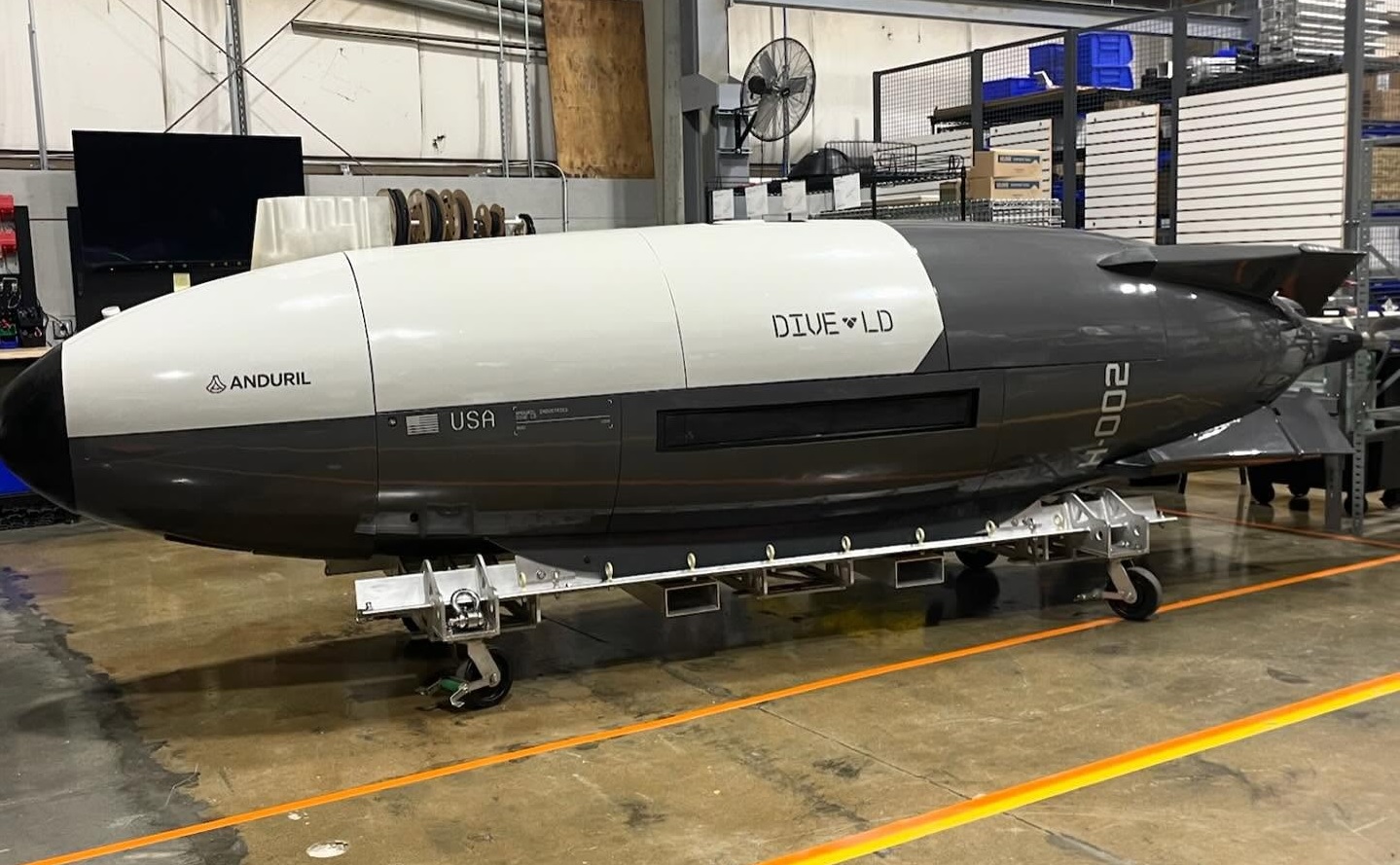
Anduril Delivers Dive-LD Autonomous Underwater Vehicle to U.S. Navy for Next-Gen Undersea Operations
World
In a significant move towards enhancing maritime autonomy, U.S. defense technology company Anduril Industries has successfully delivered its first Dive-LD autonomous underwater vehicle (AUV) to the United States Navy. The advanced underwater drone has been handed over to Unmanned Undersea Vehicle Squadron 1 (UUVRON-1), the Navy’s dedicated unit for operating unmanned undersea systems. AUV for the Future of Naval Missions The Dive-LD is designed to carry out a wide range of missions without the need for human intervention. From seabed mapping and intelligence gathering to communications relays and infrastructure inspection, this long-endurance platform is built for versatility in challenging underwater environments. According to Anduril, Dive-LD’s design provides “critical solutions to missions undersea” by combining endurance, modularity, and advanced autonomy. Key Features and Capabilities While full technical specifications remain classified, several notable features highlight Dive-LD’s role as a next-generation AUV: Endurance: Capable of long-duration missions, Dive-LD can operate autonomously for days or even weeks, depending on the payload and mission profile. Modular Payloads: The vehicle can be equipped with a range of sensors and equipment, allowing it to switch between tasks like surveillance, mine detection, or data collection. Low-Profile Construction: Designed to minimize detectability in hostile environments, its sleek shape enhances stealth in operations. 3D-Printed Exteriors: The use of additive manufacturing enables rapid customization and reduces production costs. Advanced Navigation: Equipped with modern inertial navigation systems and real-time path planning for navigating complex undersea terrain. Compact but Capable The Dive-LD is relatively compact compared to traditional undersea vehicles, making it easier to deploy from ships, submarines, or even shore-based facilities. Despite its size, it offers powerful capabilities that make it ideal for both military operations and commercial applications like offshore energy inspection or underwater infrastructure surveys. A Strategic Asset for the U.S. Navy The U.S. Navy’s delivery of the Dive-LD aligns with its larger strategic pivot towards distributed maritime operations, where smaller, networked, and autonomous systems operate in coordination. UUVRON-1, based in Keyport, Washington, will now begin rigorous testing of the Dive-LD in operational environments to evaluate its performance and integration into future mission sets. This delivery represents more than just a new tool—it reflects a shift in how the Navy conducts undersea warfare. With autonomy, endurance, and adaptability at its core, Dive-LD symbolizes the growing importance of unmanned systems in securing the oceans of tomorrow.
Read More → Posted on 2025-04-05 15:00:59World
In a bold and calculated move, China has conducted one of its most significant and rare missile defence tests in the vast expanse of the Gobi Desert, pushing the boundaries of modern military technology. In this trial, the People’s Liberation Army (PLA) launched 16 ballistic missiles simultaneously at a single target to test the effectiveness of a new radar system designed to detect and neutralise complex, large-scale threats. This exercise was not just about firing missiles—it was a show of strength, technological maturity, and strategic messaging. The test featured China’s newly developed dual-band phased array radar system, combining both S-band (for wide-area detection) and X-band (for high-resolution tracking) technologies. This advanced radar successfully identified, tracked, and guided interception of all incoming missiles with what Chinese engineers claimed was 100% accuracy. What makes this test so notable is the sheer scale. Even among top-tier military powers, such as the United States or Russia, firing this number of ballistic missiles in a single peacetime drill is virtually unheard of. The complexity of defending against such a barrage mimics real-world “saturation attack” scenarios, where numerous incoming threats are designed to overwhelm a defence system, just as seen in the October 2024 Iranian missile strike on Israel. Despite Israel’s highly praised Arrow system, some missiles broke through, highlighting the difficulty of these kinds of defences. The Gobi Desert test replicated similar high-pressure conditions. Chinese engineers reported the radar system was able to track 31 decoys and prioritize 7 real high-value threats, even while dealing with electronic jamming and countermeasures. This suggests a significant step forward in China’s ability to neutralize advanced threats like hypersonic glide vehicles and MIRV-equipped missiles, which are capable of deploying multiple warheads and decoys mid-flight. More importantly, this test serves as a real-world demonstration of China’s readiness to handle future challenges. As tensions remain high in the Taiwan Strait and South China Sea, the ability to protect against large-scale missile attacks is crucial for any superpower. This test wasn't just about proving radar efficiency—it was about changing the equation in modern warfare, particularly in scenarios where the risk of saturation attacks is high. Analysts also point to another layer: the cost and industrial capacity behind the test. Launching 16 ballistic missiles in one go is enormously expensive, but China has shown it's prepared to invest heavily in its military preparedness. This is backed by footage previously released by state broadcaster CCTV, showing automated missile production lines—factories capable of producing weapons with minimal human input, sometimes referred to as "lights-out factories." These facilities imply that China not only has a growing stockpile of missiles but the industrial muscle to replenish them rapidly, a game-changing factor in prolonged conflict situations. In essence, this test wasn’t just a technical trial—it was a message. With precision radar, layered defence capabilities, and scalable manufacturing, China is signalling that it has moved into a new era of missile defence strategy. It reflects a calculated shift in deterrence thinking, showcasing a powerful blend of science, readiness, and strategic intent in a world of rising geopolitical tension.
Read More → Posted on 2025-04-05 14:55:47World
In a major move to strengthen its long-range surveillance and intelligence operations, the U.S. Army has awarded a massive 10-year contract worth $4.19 billion to ten companies for the supply and support of aerostat systems. The contract, officially known as a Multiple Award Task Order Contract (MATOC), is aimed at advancing the Army’s airborne surveillance capabilities through cutting-edge tethered balloon systems and integrated intelligence technologies. The MATOC will support the Product Director Aerostats Production office and includes a wide range of services—ranging from hardware procurement and engineering to system fielding, logistics, life-cycle support, and replenishment of Army stocks. In simple terms, this means the selected companies will not only deliver aerostat systems but also help maintain and evolve them over the next decade. Aerostats are large, tethered balloons equipped with powerful sensors that can stay aloft for extended periods. Their primary role is to provide persistent Intelligence, Surveillance, and Reconnaissance (ISR) in various environments. These systems are especially useful for monitoring large areas, detecting threats early, and providing real-time intelligence to troops on the ground. Among the key systems covered under this contract is the Persistent Surveillance System – Tethered (PSS-T). This platform has already proven its value in overseas contingency operations and is also included in prepositioned Army stocks for rapid deployment. PSS-T combines multiple sensors, giving commanders a steady flow of visual and data-based intelligence, which can be crucial during combat or border security missions. The MATOC will also support another critical program—the Persistent Surveillance Dissemination System of Systems (PSDS2). This system connects various sensors and aerostats into a unified network, enabling faster delivery of intelligence to field units and command centers. In short, it acts like a digital nervous system, linking surveillance tools and getting the right information to the right people at the right time. One of the standout features of this contract is its flexibility. The Army can add or remove vendors as operational needs change, ensuring that its surveillance systems stay technologically current and mission-ready. This adaptability is vital in today’s fast-changing security landscape, where threats evolve rapidly and intelligence systems must keep pace. The ten firms selected for this prestigious contract are: Raytheon Company Leidos Inc. Qinetiq Inc. TCOM LLC Tyonek Technical Services LLC Advanced Technology Systems Company Elevated Technologies Mission Solutions Group Skyship Services Inc. Thunderbolt Software These companies bring a wide range of expertise—from aerostat manufacturing and integration to advanced software and operations support—ensuring a holistic and robust approach to airborne surveillance. A Strategic Investment in Persistent Surveillance This contract is not just about equipment—it represents a strategic investment in the Army’s ability to maintain a constant watch over critical regions, both at home and abroad. As global tensions continue to rise and asymmetric threats like drones and insurgent movements become harder to track, persistent ISR systems like aerostats are more important than ever. By awarding this long-term contract, the U.S. Army is ensuring that its surveillance infrastructure remains effective, flexible, and ready for the challenges of tomorrow. The combination of hardware, software, and operational support built into this agreement reflects a modern approach to defense—one that prioritizes information dominance as much as firepower.
Read More → Posted on 2025-04-05 14:50:31World
Israeli forces have escalated their military operations in the Gaza Strip, pushing more ground troops into Palestinian territory amid a fresh wave of deadly airstrikes. The conflict, already marked by weeks of devastation, took another grim turn early Friday when an Israeli airstrike struck a residential building in the southern city of Khan Younis, killing at least 17 people, many of them from a single family. Hospital officials confirmed that 16 others were wounded in the attack, which destroyed a three-story structure. Eyewitnesses and journalists at the scene described a harrowing picture—rescue workers and local residents digging through the rubble in search of survivors, while bodies wrapped in blankets were carried out from the ruins. The strike was part of a broader and intensifying Israeli offensive that has already claimed more than 100 lives in recent days. Israel’s military announced on Friday that it had launched new ground activity in northern Gaza. This move is reportedly aimed at expanding what it calls a "security zone" to weaken Hamas’ hold over the territory. In advance of the ground operations, Israel had issued evacuation orders for parts of northern Gaza, urging civilians to leave before the offensive escalated. The latest push into Gaza comes as Israel simultaneously steps up efforts to pressure Hamas into releasing remaining hostages taken during the October 7 attacks. The military’s strategy appears to be twofold—military pressure on the ground in Gaza, and targeted strikes beyond its borders. In one such operation, Israeli forces claimed to have killed a senior Hamas commander, Hassan Farhat, in a strike on Sidon, a coastal city in Lebanon. Farhat was allegedly responsible for orchestrating attacks against Israel from Lebanon and was said to lead Hamas' western operations in the region. The deepening ground offensive and airstrikes reflect Israel's shift toward a more aggressive stance, with officials openly declaring their intent to carve out a wide security corridor across Gaza. This suggests a longer-term plan for territorial control, which could significantly alter the already fragile geopolitical situation in the region. From a broader perspective, this military escalation also raises humanitarian and strategic concerns. With entire families being killed and vital infrastructure being leveled, the toll on Gaza's civilian population continues to mount. The densely populated strip has already seen displacement on a massive scale, with limited access to food, water, and medical aid. At the same time, the operation in Lebanon signals Israel’s willingness to strike beyond its borders, further raising the risk of a wider regional conflict. The involvement of Hamas-linked operatives in Lebanon brings Hezbollah and other militant groups into sharper focus, potentially opening new fronts in an already volatile environment. As Israel intensifies its military pressure, and as civilian casualties climb, international calls for de-escalation are likely to grow louder. But on the ground, the reality is that this conflict shows no immediate signs of slowing down—and the people of Gaza continue to pay the highest price.
Read More → Posted on 2025-04-05 14:46:09World
Cambodia officially opened its newly renovated Ream Naval Base on Saturday, a project supported by China that has drawn international attention, especially from the United States. At a ceremony attended by military representatives from multiple countries, Cambodian Prime Minister Hun Manet declared the base open for international cooperation, stating firmly, “We have nothing to hide.” Located on Cambodia’s southern coast, Ream Naval Base sits along the Gulf of Thailand, not far from the highly contested South China Sea. The base’s renovation, primarily backed by China, has triggered strategic concerns in the West, particularly in Washington, which fears it could serve as a new foothold for China’s military expansion in the region. Despite repeated U.S. concerns that the facility may become a hub for the Chinese navy, Cambodian leaders have consistently denied that the base will be reserved for any one country. Hun Manet used the inauguration ceremony to reinforce this message, emphasizing that Ream will be open to all partners for joint exercises and operations. “From today, Cambodia will welcome all friends to hold joint exercises in the Ream base,” Hun Manet said. Chinese and Cambodian flags flew side-by-side at the event, which featured a formal military welcome for a delegation from China’s People’s Liberation Army. Cao Qingfeng, a senior Chinese military official present at the ceremony, called the base a symbol of the “iron-clad friendship” between China and Cambodia. He noted that it would play a role in regional security cooperation, including hosting the upcoming annual Golden Dragon military drills in May. The upgraded naval facility includes a 363-meter-long pier and improved port infrastructure capable of hosting larger military vessels. Chinese warships have already docked at the base as of late 2023, and Cambodia is expected to receive two warships from China in the near future to bolster its maritime capabilities. A Strategic Shift in Southeast Asia The Ream Naval Base, once partially funded by the United States, is now emblematic of Cambodia's deepening alignment with China. Over the last decade, China has poured billions into Cambodian infrastructure and development projects, solidifying its role as Phnom Penh’s most important economic and political partner. The close relationship between the two nations dates back to the era of Hun Sen, Cambodia’s former prime minister and father of current leader Hun Manet. Under Hun Sen, Chinese influence expanded significantly, especially as Phnom Penh’s relationship with the U.S. soured due to concerns over governance, human rights, and democracy. Western suspicion over the base isn’t new. In 2019, reports emerged about a potential secret deal that might allow China to maintain a long-term military presence at Ream. The Cambodian government rejected the claims, and no such agreement has ever been confirmed publicly. However, the steady flow of Chinese military support, coupled with increased Chinese naval activity in the region, has not gone unnoticed by regional powers. The U.S. and Japan have recently stepped up engagement. In December, an American warship docked at nearby Sihanoukville, marking the first such visit in eight years. This was followed by a high-level visit from a senior U.S. Army commander in February. Cambodia also announced that a Japanese warship would become the first foreign vessel to dock at the Ream base following its reopening. The Bigger Picture Cambodia's decision to open the base to joint exercises appears to be a calculated attempt to balance rising international concerns while maintaining its deep ties with Beijing. By publicly inviting vessels from all nations, Cambodia is signaling that the base’s purpose is not exclusive, but collaborative. Prime Minister Hun Manet also confirmed that Chinese President Xi Jinping is scheduled to visit Cambodia this month, which is expected to further cement bilateral relations and possibly lead to new defense or economic agreements. While Cambodia insists that its sovereignty is intact and that it has no intention of letting a foreign military dominate its territory, the optics and timing of the Ream Naval Base inauguration underscore a significant realignment in Southeast Asian geopolitics. As China expands its influence and the U.S. seeks to re-engage with nations in the region, Cambodia finds itself navigating the complex waters between strategic autonomy and great power rivalry. For now, Cambodia presents Ream as a neutral, open-access facility—one that symbolizes both a modern military step forward and the evolving nature of alliances in the Indo-Pacific.
Read More → Posted on 2025-04-05 14:42:46Space & Technology
In a significant stride towards sustainable space missions, the Indian Space Research Organisation (ISRO) announced the successful re-entry of the PSLV Orbital Experimental Module (POEM-4) into Earth’s atmosphere on April 4, 2025, at 02:33 UTC (08:03 IST). The module safely disintegrated over the Indian Ocean, marking a critical achievement in India’s ongoing efforts to tackle the growing issue of space debris. What is POEM-4? POEM-4 was the repurposed fourth stage of the PSLV-C60 rocket, which was launched on December 30, 2024. Unlike traditional upper stages that are often left in orbit as space junk, ISRO converted POEM-4 into a fully operational orbital platform for conducting in-space experiments. During its mission, it carried 24 payloads—14 developed by ISRO and 10 from other Indian and international institutions—making it a compact yet versatile lab in orbit. Among the major payloads were SPADEX (Space Docking Experiment) twin satellites, designed to demonstrate autonomous docking capabilities, a key future requirement for space stations and satellite servicing. Technical Specifications of POEM-4 Platform: PSLV-C60 fourth stage (PS4) converted to POEM Launch Date: December 30, 2024 Initial Orbit: 475 km circular orbit Payloads: 24 total (14 ISRO, 10 others) Re-entry Date & Time: April 4, 2025 | 02:33 UTC / 08:03 IST Re-entry Orbit before Impact: 174 km x 165 km Impact Zone: Indian Ocean De-Orbiting Method: Controlled engine restart to 350 km followed by natural orbital decay Commitment to Clean Space The successful de-orbiting and controlled re-entry of POEM-4 is part of ISRO’s broader Debris Free Space Mission (DFSM). This initiative reflects India’s alignment with international best practices for space sustainability, including passivation—a critical step where leftover fuel is vented to prevent accidental explosions or breakups in orbit. POEM-4's descent was precisely tracked and monitored by ISRO's System for Safe and Sustainable Space Operations Management (IS4OM) along with support from the United States Space Command, ensuring that the module’s path and impact location posed no threat to human life or active satellites. A Step Towards the Future ISRO’s POEM initiative not only serves as an eco-friendly approach to space operations but also provides a low-cost platform for research and development in microgravity conditions. By giving a second life to rocket stages, ISRO is opening new avenues for scientific innovation without adding to space congestion. The success of POEM-4 sets the stage for future POEM missions and underlines India's growing expertise in responsible space management. As ISRO prepares for more ambitious missions—ranging from Gaganyaan to planetary explorations—initiatives like POEM show that India’s space program is not just advancing technology, but also leading the way in ethical and sustainable space exploration.
Read More → Posted on 2025-04-05 14:39:38India
In a significant stride towards strengthening India’s air defence capabilities, the Defence Research and Development Organisation (DRDO) and the Indian Army conducted four highly successful flight-tests of the Army version of the Medium-Range Surface-to-Air Missile (MRSAM) system. The tests were held on April 3 and 4, 2025, at Dr APJ Abdul Kalam Island off the coast of Odisha. The trials were conducted under realistic operational scenarios, targeting high-speed aerial threats at different altitudes and ranges. All four missiles successfully intercepted and destroyed their targets with precision, registering direct hits — a strong validation of the MRSAM’s accuracy and readiness. These tests weren’t just ordinary evaluations. They were conducted with the complete weapon system in fully operational configuration, mimicking actual battlefield conditions. Targets were engaged at long-range, short-range, high altitude, and low altitude, covering the full spectrum of possible aerial threats. Performance data was collected through a network of radars and electro-optical tracking systems stationed at the Integrated Test Range in Chandipur. The Indian Army, under the guidance of DRDO, executed these tests through its Eastern and Southern Commands. This also marked a significant achievement for the Army’s operational preparedness, as these successful trials cleared the path for deploying the MRSAM weapon system in two regiments. The MRSAM system is a joint development by DRDO and Israel Aerospace Industries (IAI), tailored specifically for the Indian Army. It consists of a mobile launcher, multi-function radar, command and control systems, and a network of support vehicles — enabling it to detect, track, and neutralize multiple aerial targets in a matter of seconds. These flight-tests reaffirm the effectiveness of India’s indigenous defence technology. Raksha Mantri Rajnath Singh congratulated DRDO, the Indian Army, and Indian industry partners for the successful demonstrations. He emphasized that the four back-to-back successes demonstrate the robustness of India’s defence ecosystem and its growing self-reliance. DRDO Chairman and Secretary of the Department of Defence R&D, Dr. Samir V. Kamat, also praised the teams involved, calling the trials a major milestone in building India’s integrated air defence network. He underlined that these tests reflect the growing synergy between science, technology, and defence operations. A Quick Look at What Makes MRSAM Special: Range: Capable of intercepting aerial targets at a range of up to 70 km. Multi-target Handling: Can track and engage multiple threats simultaneously. All-weather Capability: Operates efficiently under all environmental conditions. Quick Reaction Time: Rapid response against incoming threats. Mobile and Flexible: Easily deployable in different terrains and locations. The successful testing of the MRSAM Army variant is more than just a technical achievement. It is a signal of India's maturing defence capabilities, the confidence of its armed forces in indigenous systems, and a step closer to becoming self-reliant in critical defence technologies. With these successful trials, the MRSAM system is now closer to being fully operationalised and integrated into India's defence forces.
Read More → Posted on 2025-04-05 14:36:01World
Germany is set to arm its military with loitering munitions for the first time, marking a major shift in its defense strategy amid growing geopolitical tensions. According to reports, the German Defense Ministry is close to finalizing contracts with two companies to acquire an initial batch of these explosive drones, which will be tested across the army, navy, and air force in the coming months. While Germany has previously hesitated to adopt such weaponry due to ethical concerns and its traditionally restrained defense posture, recent developments—particularly lessons learned from the ongoing Russia-Ukraine war—have driven a reassessment of its capabilities. Loitering munitions, often referred to as "suicide drones," can hover over a battlefield before precisely striking enemy targets. Their effectiveness has been widely demonstrated in Ukraine, where both sides have used them to disable armored vehicles, air defense systems, and high-value command centers. German military officials have acknowledged the growing importance of drones in modern warfare. One defense source stated, “The use of drones and the defense against them is crucial for the survival of our troops. That’s a lesson we’ve learned from Ukraine.” Given this, Berlin is also emphasizing drone training for its soldiers, ensuring that all personnel are equipped with the necessary skills to operate or counter these systems. While the initial contract is expected to focus on a limited number of drones for training purposes, Germany is reportedly preparing for larger acquisitions in the near future. A long-term procurement plan for a substantial stockpile of loitering munitions is expected to be signed by the end of the year, signaling a deeper commitment to enhancing its drone warfare capabilities. This move aligns with Germany's broader military modernization efforts, which have accelerated since Russia’s invasion of Ukraine. With NATO allies increasingly relying on drones for intelligence gathering and combat operations, Germany’s entry into the loitering munitions domain reflects a significant strategic pivot. As Berlin continues to recalibrate its defense policies, the integration of these advanced weapon systems could reshape its military doctrine for years to come.
Read More → Posted on 2025-04-04 15:38:47Search
Top Trending
-
 Agneepath Scheme replaced with Sainik Samman Scheme 2024, Defence Minister Rajnath Singh Relaunched Agniveer Scheme
Agneepath Scheme replaced with Sainik Samman Scheme 2024, Defence Minister Rajnath Singh Relaunched Agniveer Scheme
-
 India's TEDBF Program Takes Shape First Flight by 2028: Aiming for Naval Supremacy with Advanced Stealth and Technology
India's TEDBF Program Takes Shape First Flight by 2028: Aiming for Naval Supremacy with Advanced Stealth and Technology
-
 Pakistan Announces 15% Increase in Defence Budget for 2024-25 Amid Economic Crisis
Pakistan Announces 15% Increase in Defence Budget for 2024-25 Amid Economic Crisis
-
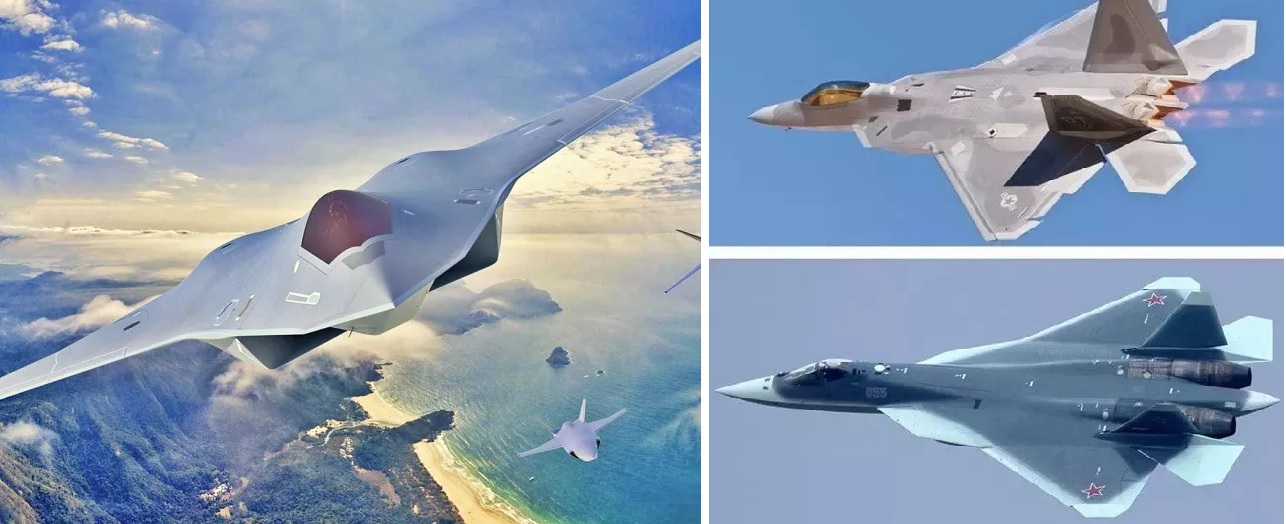 Key Differences Between 5th vs. 6th Generation Fighter Jets
Key Differences Between 5th vs. 6th Generation Fighter Jets
-
 What Would Happen if the USA Left NATO? A Comprehensive Analysis
What Would Happen if the USA Left NATO? A Comprehensive Analysis
-
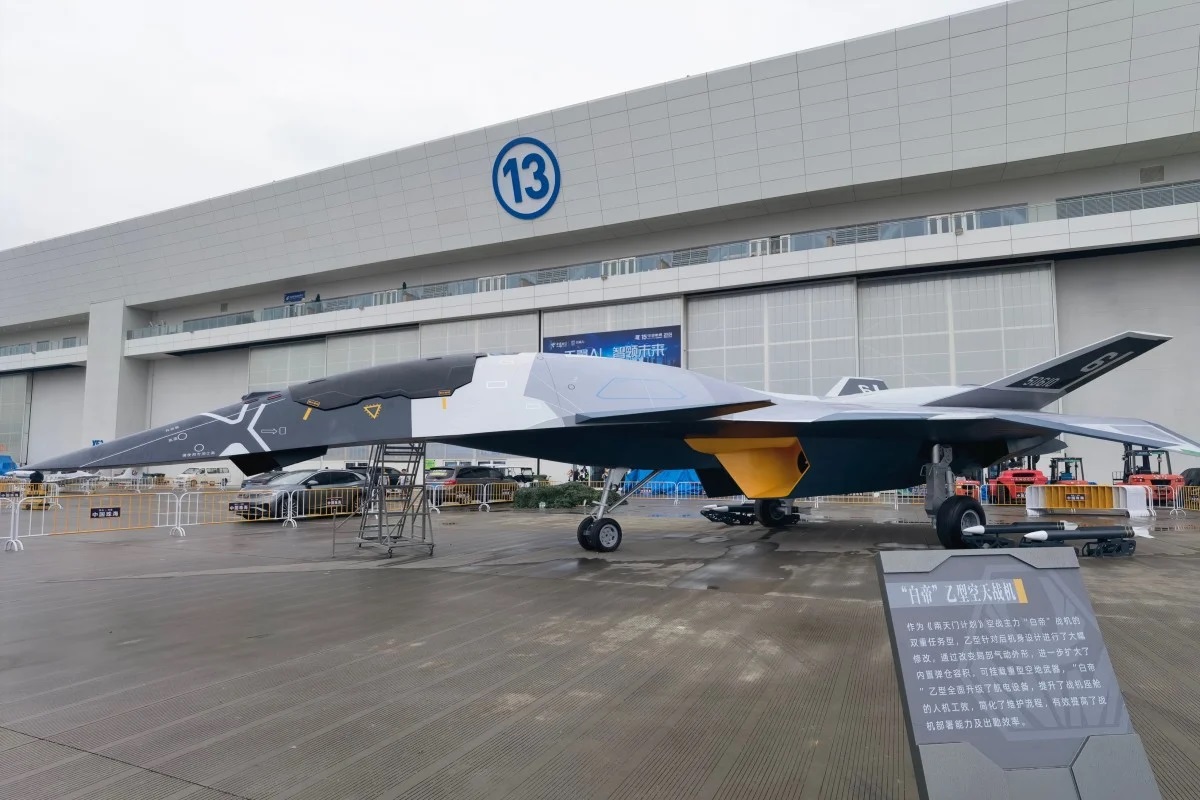 China Unveils the 6th-Generation “Baidi B-Type” Aerospace Fighter Concept
China Unveils the 6th-Generation “Baidi B-Type” Aerospace Fighter Concept
-
 China's Latest DF-31AG ICBM Test: A Strategic Leap in Global Missile Capabilities
China's Latest DF-31AG ICBM Test: A Strategic Leap in Global Missile Capabilities
-
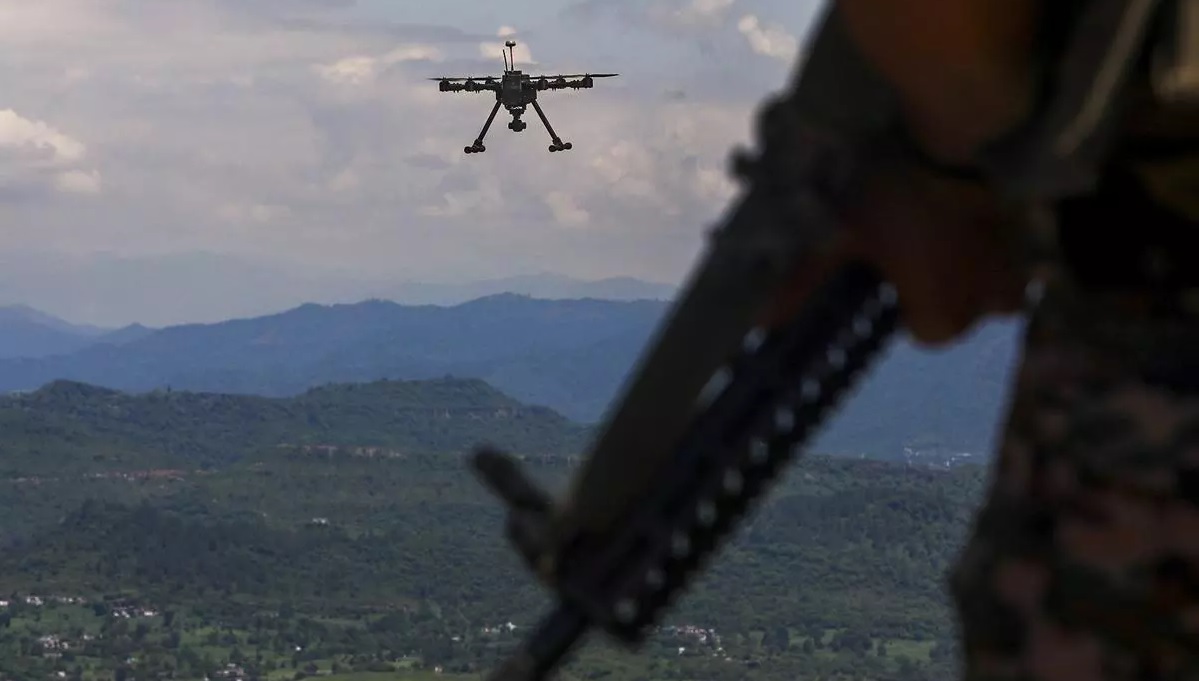 India's Defence Ministry Warns Against Chinese Parts in Military Drones Amid Security Concerns
India's Defence Ministry Warns Against Chinese Parts in Military Drones Amid Security Concerns
Top Trending in 4 Days
-
 Elon Musk’s SpaceX Leads Bid for Trump’s Ambitious “Golden Dome” Missile Shield
Elon Musk’s SpaceX Leads Bid for Trump’s Ambitious “Golden Dome” Missile Shield
-
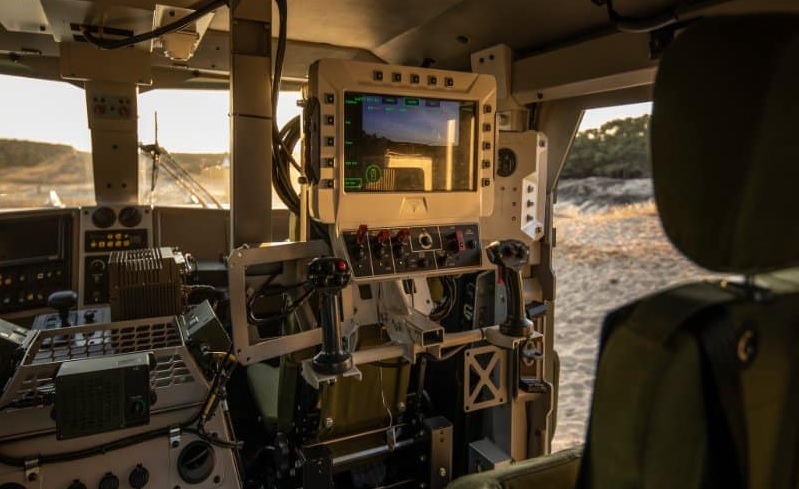 JCBL Group Seals Historic Defence Deal with Slovakia, Boosting India's Military Manufacturing Might
JCBL Group Seals Historic Defence Deal with Slovakia, Boosting India's Military Manufacturing Might
-
 India’s Affordable Artillery Offer Disrupts Global Defense Market
India’s Affordable Artillery Offer Disrupts Global Defense Market
-
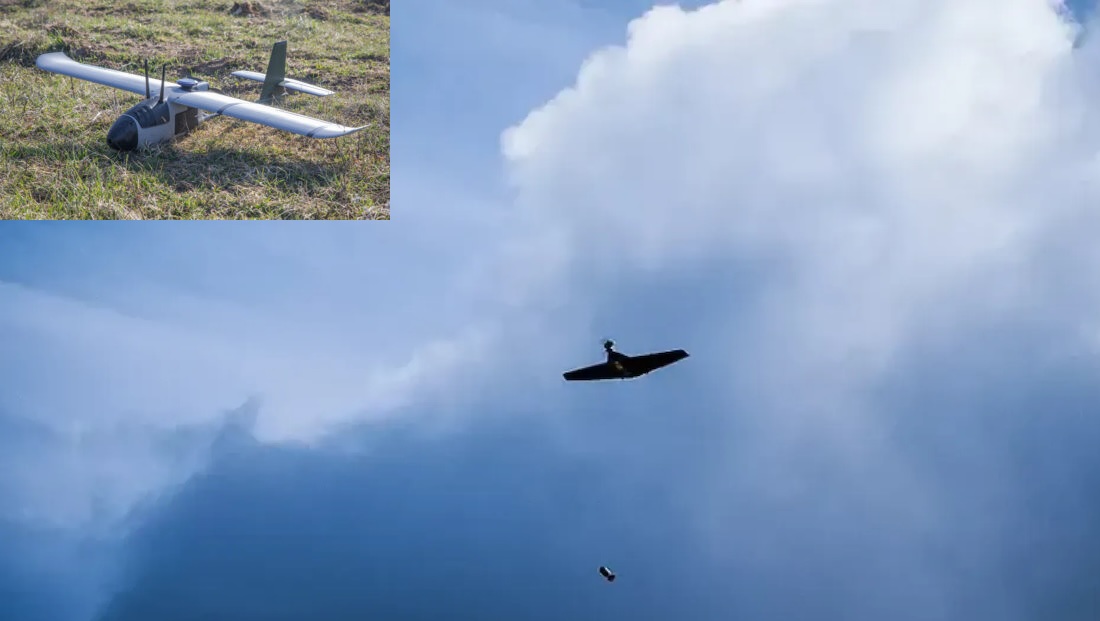 Ukraine Deploys New Indigenous B-1 Combat Drone to Strengthen Frontline Strikes
Ukraine Deploys New Indigenous B-1 Combat Drone to Strengthen Frontline Strikes
-
 Explosion Destroys Key Building at Northrop Grumman’s Rocket Facility in Utah, No Major Injuries Reported
Explosion Destroys Key Building at Northrop Grumman’s Rocket Facility in Utah, No Major Injuries Reported
-
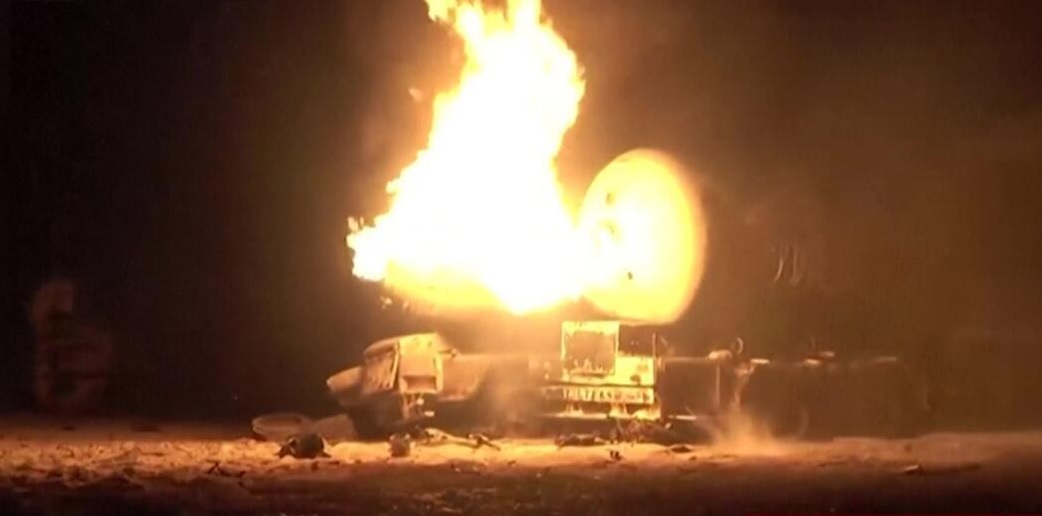 US Accuses Chinese Satellite Firm of Supporting Huthi Attacks on Red Sea Shipping
US Accuses Chinese Satellite Firm of Supporting Huthi Attacks on Red Sea Shipping
-
 Washington Approves $180 Million Engine Sale to Boost Israel’s Eitan Armored Vehicle Fleet
Washington Approves $180 Million Engine Sale to Boost Israel’s Eitan Armored Vehicle Fleet
-
 U.S. Marines Deploy NMESIS Missile System to Philippines for Balikatan 25, Boosting Coastal Defense and Allied Cooperation
U.S. Marines Deploy NMESIS Missile System to Philippines for Balikatan 25, Boosting Coastal Defense and Allied Cooperation







